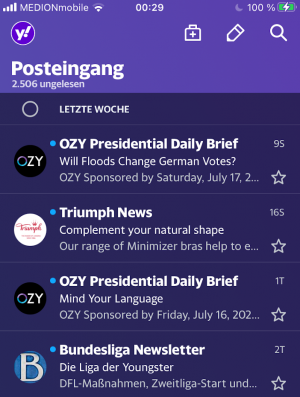On Monday, 12th of July 2021, Google officially announced the start of BIMI (displaying sender logos) to the public. We will tell you, what needs to be done to get BIMI actually displayed.
GMail launches BIMI


On Monday, 12th of July 2021, Google officially announced the start of BIMI (displaying sender logos) to the public. We will tell you, what needs to be done to get BIMI actually displayed.

This can be defined as an assessment of an individuals response for some type of offering. For the instance of email marketing, a user may open or click through an email, they would therefore be engaging with your email campaign.
Commonly this term is referred to as User Engagement rate, whereby these interactions are measured. Each ISP may measure these in different ways, each action may have a different rating; this is something important to consider.
[Gmail] Promotions Grid View
Last week Gmail made a change to the Promotions Tab.
In a nutshell; for a trial period for those members who have the Promotions Tab enabled, they will now have the option to view the images nested within the emails in a more visual way. Potentially this could be huge for marketers and from a Deliverability perspective this could also be used to build a better reputation amongst your community. Image below from Google:
Whats everyone saying ?
Clickz created a good article which explains in detail the changes made and what you could expect, see here. This was original based on the article over at zettasphere.com and gives you some insight into why gmail might be doing this.
Starting from last week, gmail has implemented an auto list unsubscribe in the header of the email.
See illustration below:
After clicking the link, the user will then need to click to confirm you want to unsubscribe from the mailing list:

If for example, the client doesnt support this setup with gmail or the email is spam, then gmail redirects the member to navigate the clients unsubscribe or gmail policies to see the best way to be removed from the mailing list.
This might cause some uproar, but this is no showstopper in my mind. If a member doesnt want your email anyway, then better they unsubscribe directly than to complain. Look after your list and gmail will look after your reputation.
I hope you’ve all had a good start to the year, it’s that time again.
Following on from the boom of the holidays, now the sales are upon us…but what’s that, a lul, a silence..
I still hear the whispers about gmail changes, out with the old and in with the new,
Spamhaus planting a gentle kiss in regards to how they deal with ESPs; what does this mean? will anything change? do marketers care, will ESPs enforce anything? isn’t it all just a vicious cycle, i mean, my emails are delivering what do i care.
In deliverability there’s always hope, and that burst of optimism at the start of the year.
Key point here is, keep your house clean, don’t worry about neighbours or external issues and concentrate on what’s on your plate.
What’s your biggest worry from a Deliverability perspective? I’d be interested to know.
This year i’ve promised myself to be more active on the blog, it’s time to get those cogs moving in time for the increase in volume.
Looking forward to the year ahead, I wish you all the best of luck.
Regards,
Anthony Mitchell
Lesson 2, the beginning of Commercial email
Now we start to discover the initial beginnings of commercial email. Please note that there are many ISPs not mentioned here, however i shall endeavor to cover them in my blog postings along the line, the major players are mentioned as key points of reference. I found a really cool infographic regarding the history of commercial email.
In 1988 Steve Dorner developed Eudora the first commercial product to be widely used for reading and sending email on local area networks (LANs)
A year later in 1989 Compuserve and MCI mail become first formally sanctioned email carriers connected to the internet (1989)
1991, Ray Ozzie and Mitch Kapor released a major version of Lotus Notes (2.0)
1992, Microsoft releases Microsoft Outlook their answer to Lotus Notes.
In 1993, AOL brought out an ISP, which was accessible internet based email system by this time there were 7 million users.